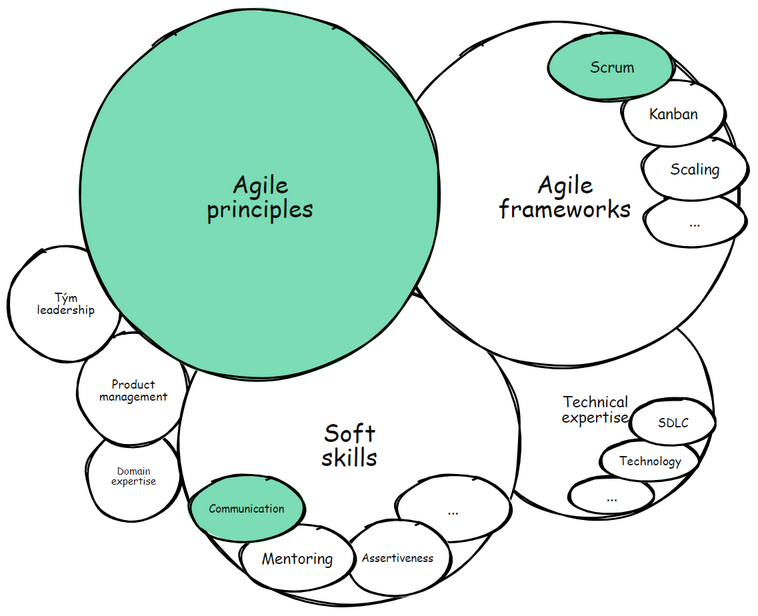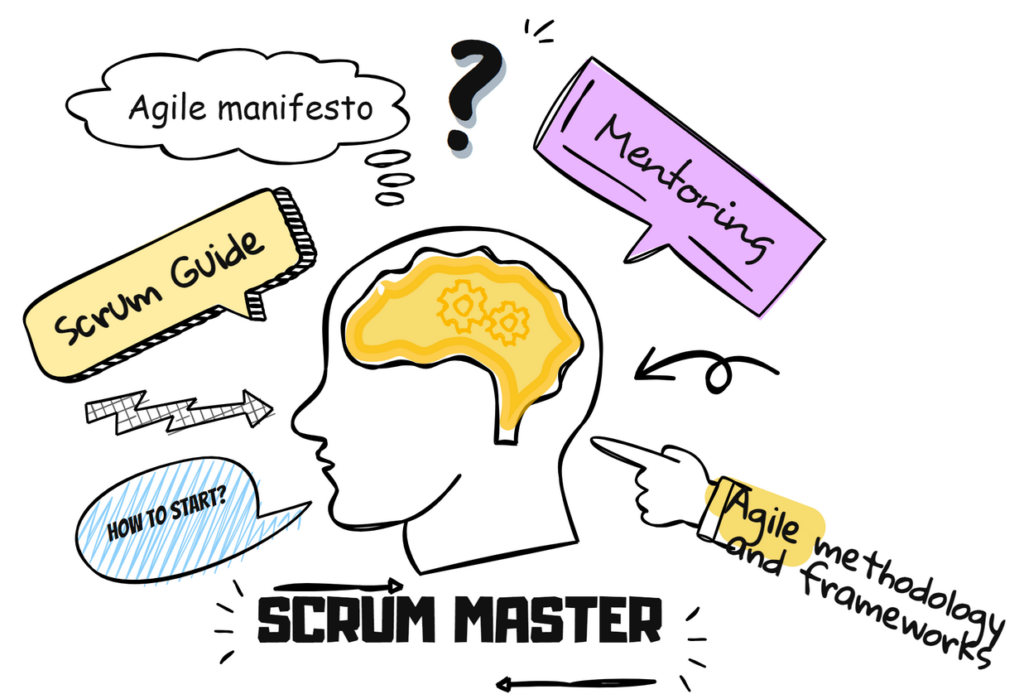Would you like to become a Scrum Master? Then you probably have thoughts running through your head about what you will need to know to begin with. And that is what today’s article is dedicated to. Be sure to familiarize yourself with the description of what this role entails before you begin. For example, the Scrum guide will give you a good description. You can also interview friends who are already doing this job.
Not only that, you should know that this is a very complex role and the practice of a Scrum Master often does not resemble the ideal agile world that you know from conferences and training. Therefore, it is not advisable to start this role immediately after school. Experience from other positions in the field you want to focus on as a Scrum Master will also be useful to you. You will most often encounter the Scrum Master role in IT, but you can come across it in a number of other industries, for example in marketing or HR.
This is a position where, on the one hand, you help teams and companies to deliver the most valuable products and services to end customers. On the other hand, you open the way for teams to make their work more efficient. So it doesn’t necessarily have to be about IT. It is enough for the company to have a product that it wants to bring as close as possible to its customers so that it ultimately sells best. Take a look at the image that shows some of the knowledge and experience a good Scrum Master should have.

What to know before starting a Scrum master role
So how do you get started with this role? First of all, you should have an idea of what agile development is and understand how to apply its principles in practice. The principles of agile development are the alpha and omega for correctly grasping the role of Scrum master. Even before starting your career as a Scrum Master, it is definitely worth reading the Agile Manifesto and also keep reminding yourself of it. This will also help you in the correct understanding and use of agile frameworks.
And you’ll also need to learn the Scrum framework itself. To get started, it is enough to visit the site of one of the organizations focusing on Scrum, where you can read more about this framework. In the future, however, you will definitely apply your knowledge of other frameworks such as Kanban and others. But at the beginning of your career, it is enough to know that Scrum is not the only one.
The Agile Manifesto and its meaning for the Scrum Master
The Agile Manifesto was created as a response to the need to deliver the greatest possible value to the customer in the shortest possible time. This approach is a response to classic development methods (e.g. Waterfall), where the product was developed for many months and years with an uncertain result. It was based on the assumption that we know what the customer wants. Alternatively, it is enough if he tells us his request once at the beginning. It is enough to develop such a product, thoroughly document it, give the customer a chance to understand it a little, package it and send it. How simple. Unfortunately, this procedure does not always work.
The Manifesto shows a different path, which he described in the following points.
We appreciate more:
- People and interpersonal relationships before processes and tools
- Functional software before exhaustive documentation
- Cooperation with the customer before negotiating contracts
- Responding to changes before following the plan
Source: https://agilemanifesto.org/
The principles described in the Agile Manifesto are the foundation for anyone serious about agile development. So also for the Scrum Master. Stick to them more than other tutorials and frameworks. These frameworks are only possible ways of applying agile principles and their supplements. Such an approach opens up the possibility of building your own Scrum Master path. And you will become more useful to your teams than if you stuck to any framework tooth and nail.
Scrum guide
When learning about Scrum, you cannot avoid the publication of the Scrum guide, which is based on the Agile Manifesto. This publication is continuously updated so that, like your teams, it improves over time. But keep in mind that this is really a guide, not a list of dogmatic rules. That’s why it’s so important that you understand and get used to the principles of agile development. Scrum is just one of the ways to apply the aforementioned agile principles in practice. In the same way that individual companies and even their teams differ from each other, the application of agile development can also differ, even Scrum itself (which is supposed to be only one, right?).
Try to understand why things are described the way they are in the Scrum guide and what situations and problems they solve. Then you don’t have to be afraid to experiment and adapt to the needs of your organization and teams. Any deviation from the manual will always be supported by the basic principles of Agile.
Mentors around you
If you have a choice, try to find a job where you will not be alone as a beginning Scrum Master, but you will join experienced Scrum Masters and Agile Coaches. Mentorship from more experienced colleagues is of immense value to a budding Scrum Master. Colleagues will guide you through complex situations, show direction and provide valuable feedback. And if you’re really lucky, people around you will encourage you to find your own way. So don’t forget to ask at the interview what other Scrum masters are working in the company and, above all, how they cooperate with each other.
Community use
Fortunately, the agile community is broad and vibrant. Become part of it and don’t worry about the fact that at first you may be more passive than active. Even passive observation of current trends and opinions will open up new horizons. The diversity of perspectives in the community will help you find your own way to best help teams and organizations. There is never any shame in asking questions and seeking help. Collaboration with other Scrum Masters and Agile Coaches is key to developing your skills and successfully performing the Scrum Master role. Creating an environment where teams develop faster and reach their full potential is the result of a joint effort of the whole team with the contribution of the experience of the Scrum masters and coaches you will listen to.
Would you like to learn Scrum and learn a lot of practical experience from agile transformations and work with agile teams? You can sign up for our hands-on training Scrum in practice – real use and best practices.

